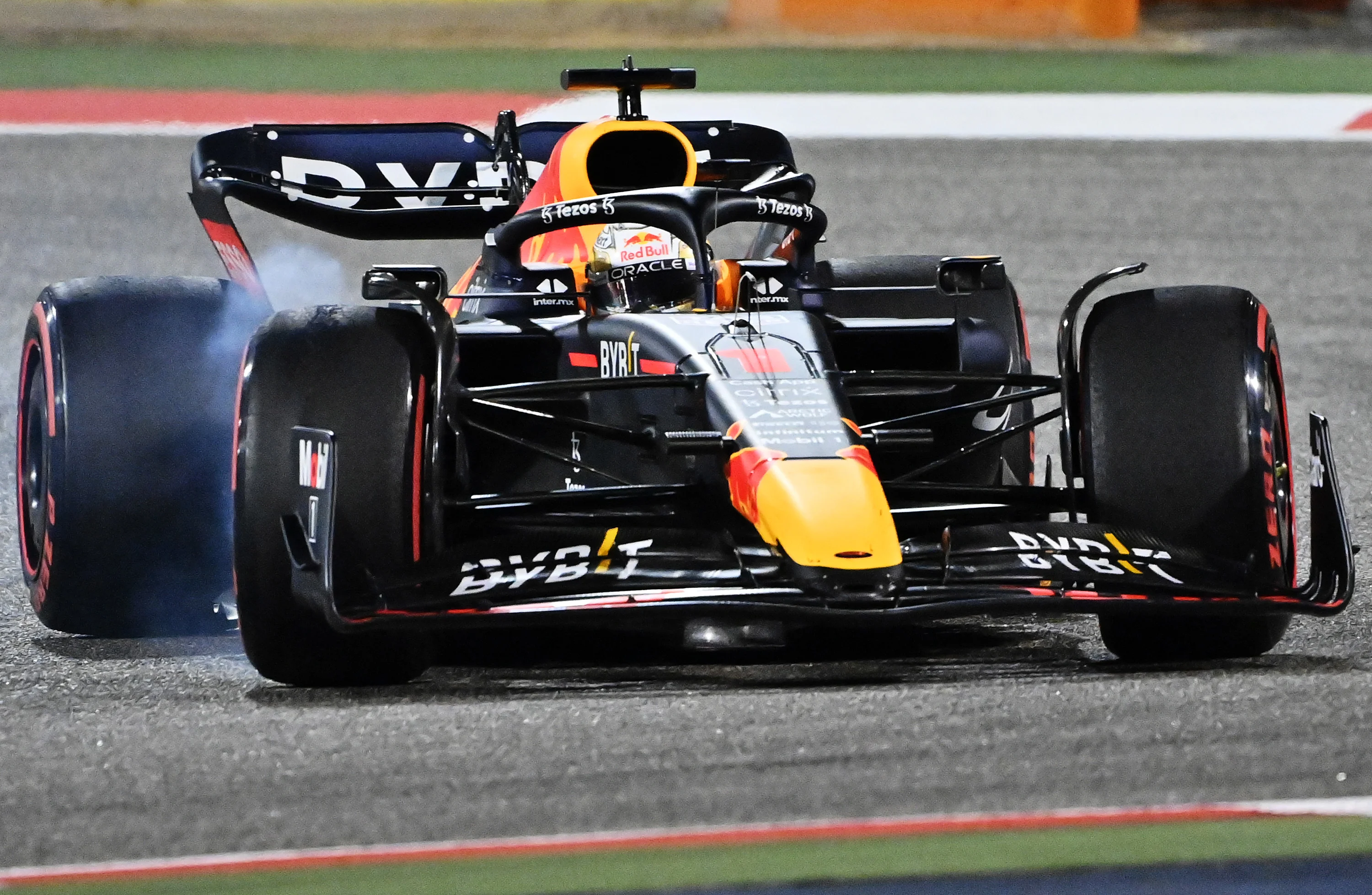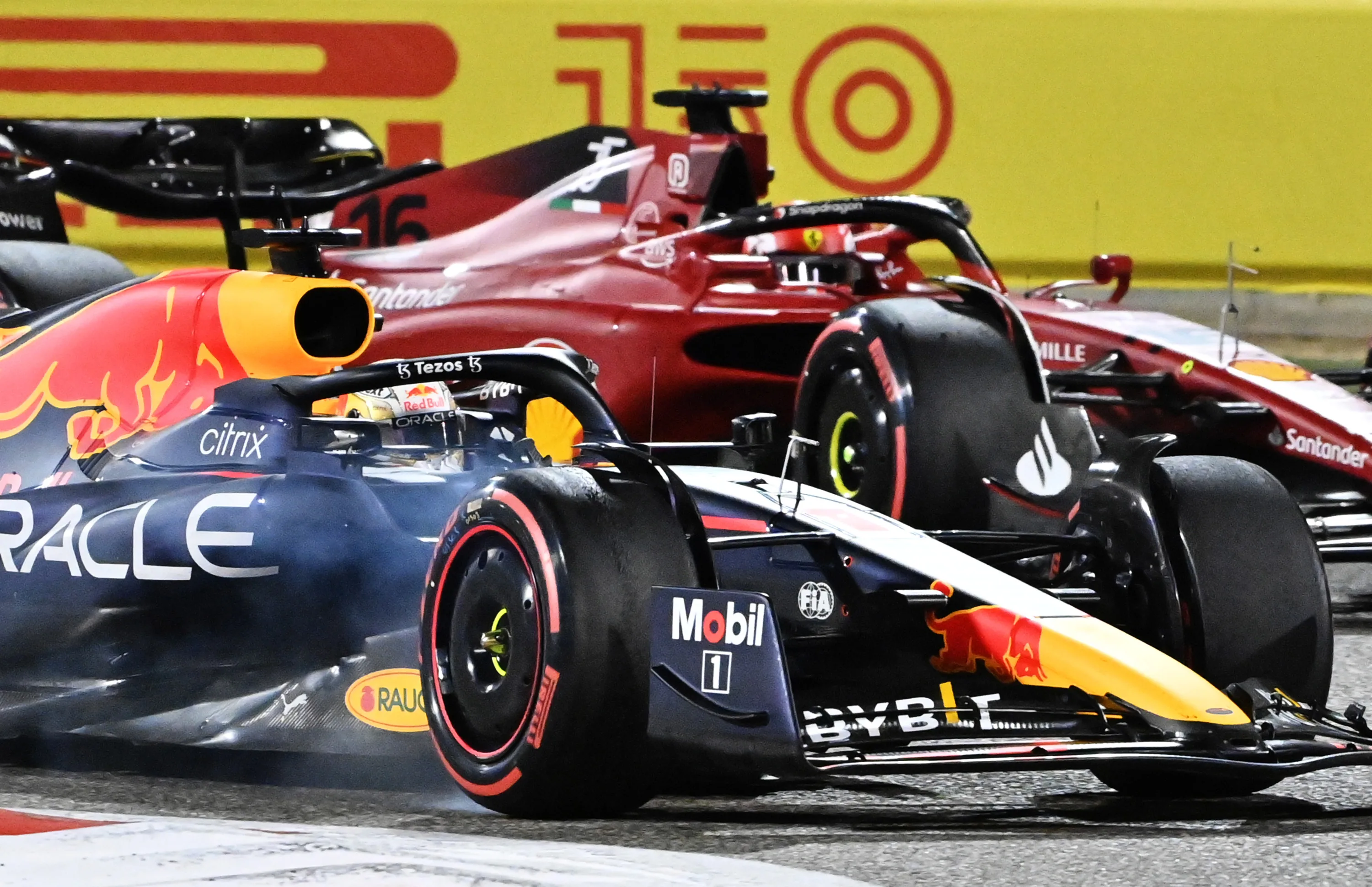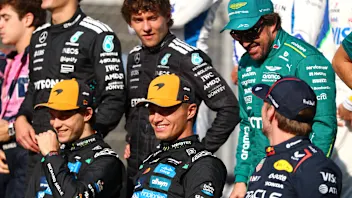As everyone else struggled to balance the problems caused by tyres and brakes around Bahrain’s demanding Sakhir circuit, Charles Leclerc and Carlos Sainz delivered Ferrari an immaculate one-two.
Even before the Red Bulls of Max Verstappen and Sergio Perez retired late in the race with fuel feed-related technical issues, Leclerc had already repelled Verstappen’s briefly spectacular challenge with calm resolve.
Those twin challenges of tyres and brakes had thwarted Verstappen's attempts at taking control of the race from Leclerc. Everyone was wrestling with those challenges, with the possible exception of Leclerc, given that he was running in valuable clean air.
READ MORE: Leclerc hails ‘perfect start’ for Ferrari after 'tricky' fight with Verstappen in Bahrain
The Sakhir circuit’s surface and its layout have always made it one of the toughest tests of brakes and tyres the cars see all season.

The surface has a very rough asphalt with a high granite content. The layout features many interlinked, long-duration corners, interspersed with a couple of hairpins (Turns 8 and 10) in which the rear tyres become very hot. At most tracks the tyres can recover their equilibrium temperature down the straights, but here there is very little straightline running. The forces acting upon the tyres are therefore relentless.
Even more so this year with the new regulation cars, which have less mechanical grip in slow corners – so stressing the front tyres in particular – and massively more aerodynamic grip through the fast corners, placing bigger sustained lateral loadings on them.
The ground effect aerodynamics mean the cars need to be run within a very narrow ride height window, necessitating stiffer suspension than before – and this puts yet more strain upon the rubber. Then there’s the aerodynamic phenomenon of porpoising, with many of the cars bouncing on their suspension at high speeds. This too feeds directly into the tyres. All on cars which are heavier than ever before. Pirelli also increased the minimum pressures between Friday and Saturday in Bahrain.
As with the tyres, so with the brakes. They get no respite, no time to cool adequately after the repeated punishment of Turns 1, 4, 8 and 10. With the carbonfibre brake discs, this creates the phenomenon of oxidisation – layers of the material simply dissolve into the air if it becomes too hot – and the disc can rapidly oxidise away to nothing unless temperatures are very tightly controlled.
The new cars have put the brakes under yet more strain. Faster in the fast corners but slower in the slow means there is more braking to be done. Furthermore, the wheel covers legislated in to contain the aerodynamic wake of the cars mean the heat is more enclosed.
You need to know all this to fully appreciate the limitations placed upon Verstappen in his attempts at wresting the lead from Leclerc.
Once Verstappen had lost the drag race off the front row to Leclerc, his challenge was a very tough one. Although the new regulations have tidied up the wake of the car ahead to allow other cars to follow more closely, the car behind is still receiving less cooling air for the tyres and brakes.
By as early as Lap 3, Verstappen was being told to lift and coast to bring his brake temperatures under control. He did much of the first stint driving to his brake temperatures, allowing Leclerc to edge away without having to push his tyres too hard. That first stint controlling the brake temperatures gave Verstappen no opportunity at challenging Leclerc on track. The next opportunity would come around after the first pit stops.
FACTS AND STATS: Ferrari end 45-race win drought in Bahrain Grand Prix, as Zhou scores on debut
Red Bull brought him in from 4s behind Leclerc at the end of Lap 14 for an undercut attempt. Normally, that would be too far behind to give a realistic chance of passing. But this is where the heavy performance drop-off of the tyres imposed by this track came to Verstappen’s aid.
Verstappen drove his new-tyred out-lap as Leclerc was driving his old-tyred in-lap, and in that crossover, the difference in tyre performance would be around 3s in Verstappen’s favour. A small delay on the right-front at Leclerc’s stop and the speed difference between Verstappen’s flat-out car on the pit straight and the Ferrari as it accelerated back up to speed accounted for most of the rest of that previous 4s gap – putting Verstappen right on the Ferrari’s tail into Turn 1.

As he’d left the pits, Verstappen was cautioned not to push too hard on the out-lap from cold as that would have destroyed the tyres very quickly. This was extremely frustrating for him, as he felt he could comfortably have made up the extra few tenths, which would have had him ahead of the Ferrari had he been allowed to push.
But the good news was his brake temperatures were now okay. “You have one chance at going for a pass before the brake temperature becomes an issue again,” he was told. At the end of the following lap he put that aggressive DRS-assisted pass on the Ferrari into Turn 1, but Leclerc was able to cleverly position himself so as to have DRS up the following straight, enabling him to retake the lead into Turn 4.
HIGHLIGHTS: All the action from the season-opening Bahrain Grand Prix
Verstappen wasn’t interested at this point in complying with the ‘one chance’ request and he repeated the manoeuvre on the next lap – and the next – but each time Leclerc was able to retaliate to get back in front. After three successive laps of heavy braking into Turn 1, the Red Bull's brake temperatures were excessive once more – and a frustrated Verstappen was back into lift-and-coast mode for much of the rest of the stint.
The frustration wasn’t over for the Dutchman either. At the second stops he was again brought in from around 4s behind – and the exact same scenario played out as before. The new tyres bought him a chunk of time as Leclerc pitted a lap later, but the requirement not to push them too hard meant that chunk wasn’t quite enough. “That’s two times I could have got in front,” he raged.
But even greater disappointment lay ahead for him. Unconnected to either brakes or tyres.



.webp)

.webp)
.webp)
